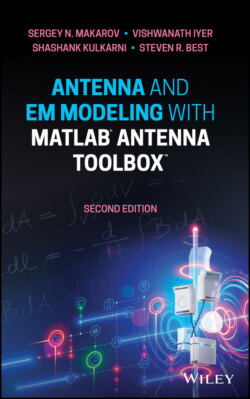Читать книгу Antenna and EM Modeling with MATLAB Antenna Toolbox - Sergey N. Makarov - Страница 35
Example 1.8
ОглавлениеShow that the addition of a lossless transmission line of any length, which is still perfectly matched at the generator, does not change average power delivered to the antenna of any input impedance. Only a phase of the reflection coefficient at the generator changes.
Solution: The solution is based on Eq. (1.24), which yields
(1.25)
Therefore, according to Eq. (1.17),
(1.26)
This example is perhaps overly optimistic. It needs two notes of caution.
First, if the transmission line is lossy, the factor |exp(−2jkl)| is becoming less than one (k is becoming complex) and the reflection coefficient decreases. An antenna connected by a very long lossy cable will be perfectly matched to the generator since |Γ*| → 0, but its radiated power will simply be zero. For example, a popular RG‐58 50‐Ω cable with the length of 10 m will accept 100 W from the generator but deliver only 33 W of power to the antenna. It is not a good practice to “match” the antennae by adding long lossy transmission lines.
Second, while one mismatch at the antenna still keeps the delivered power and |Γ| unchanged, two or more arbitrary mismatches (the second mismatch is often at the generator) due to non‐perfect cables, connectors, etc., may (or, sometimes, may not) lead to the “ripples” or visible oscillations of the measured |Γ| as often seen on the network analyzer. This is because the factor exp(−2jkl) will appear not only multiplicatively, but also additively.
